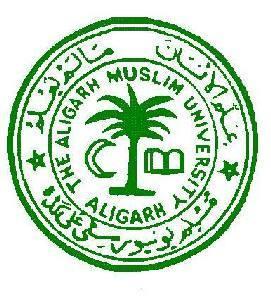| What was the character of socio-religious reforms in the 19th Century and how did they contribute to the national awakening in India? (CSE 2007) |
In 19th century the process of religious reform had started almost in all Indian religions. The contemporary Indian social system was associated with religion. Naturally religious reforms and social reforms were complementary to each other. In 19th century, a lot of socio-religious reform movements took place; like in Hindu religion, the Brahmo Samaj and Arya Samaj, in Muslim religion Aligarh and Ahmedia movement, in Sikh religion Akali movement and in Parasi religion Rahnumai Majdayasan Sabha came into existence.
| Brahmo Samaj: The phrase Brahmo Samaj literally means the society of the worshippers of the One True God. Brahmo means one who worships Brahma, the Supreme Spirit of the universe and Samaj means a community of men. The Brahmo Samaj therefore represents a body of men who want to establish the worship of the Supreme Being in spirit as opposed to the prevailing idolatry of the land. The movement was started by Raja Rammohan Roy and his friends by opening a place for public worship on the Chitpore Road in Calcutta, and was duly and publicly inaugurated in January 1830 by the consecration of the first house of prayer, now known as the Adi Brahmo Samaj. Read more about Brahmo Samaj: http://www.thebrahmosamaj.net/history/history.html |
| ||
|
| Arya Samaj : The founder of the Arya Samaj was Swami Dayananda Saraswati, who was born in Kathiawar in 1824. This Samaj is more of a social institution, with a religious background. It has Gurukulas, schools, and Pathshalas. The Suddhi Sabha is a proselytizing branch of the Arya Samaj. The followers of the Arya Samaj do not perform idol worship. Swami Dayanand Saraswati wrote "Satyarth Parkash" ( Light of Truth) | ||
| Ahmedia Movement: The Ahmadiyya movement is considered one of the most influential and important Muslim socio-religious movements in India. The movement was started by Mirza Ghulam Ahmad in Punjab. He was a well educated and literate person and he started to proclaim a mission as Masih Maw`ud (promised Messiah), restorer and Mahdi (guide). He also claimed that he was endowed with the powers of prophethood. The main targets of the Ahmadiyya movement were a few well-known Sunni Ulama of the Deoband and the Ahl-i Hadith movements that were increasingly influential among Sunnis in the region. Mirza Ghulam Ahmad also strongly spoke against the increasing influence of the Christian missionaries in Punjab and its surrounding areas. Mirza Ghulam Ahmad and his followers described them as a distinct religious community. They also claimed themselves to be the only upholders of `true Islam`. | |||
| Aligarh Movement was the movement led by Sir Syed Ahmed Khan, to educate the Muslims of the Indian subcontinent after the defeat of the rebels in the Indian rebellion of 1857. It had enormous success and had a profound impact on the future of the subcontinent. It’s most significant achievement was the establishment of Muhammadan Anglo-Oriental College at Aligarh, which later became Aligarh Muslim University. |
| ||
| Akali movement
During the years of 1919 and 1920 there were more upcoming parties. In Punjab, a unionist party was formed to look after the interests of cultivators i.e. Muslims and Hindus. Many Sikhs began an Akali movement to re gain control over their Gurudwaras. These sacred places were being managed, or mismanaged, by corrupt Mahants who enjoyed the backing of the British government. After a prolonged and heroic campaign, the Sikhs recovered possession of their holy shrines.
| |||
| Rahnumai Majdayasan Sabha The Theosophical Society of Colonel Cleott popularized by Annie Besant in 1886 in Madras, the Rehnumai Mazdayasan Sabha of the Parsees established by Dadabhai Navaroji in 1851 in Bombay and the Sri Narayan Dharma Paripalan Yogam started by Sri Narayana Guru in 1903 in Travancore were some other reform movements of late 19th century. All these reforms were attempts at steering the Hindu religion towards Vedanta, which is the backbone of its philosophy. | |||
|
|
|
| |
Almost all the reformers were influenced by the modern science and rationality and the conclusion of humanism. But from the nature’s point of view, there were some differences in these movements. In some reforms the dependence on Western thought was more.
For example Arya Samaj, Theosophical Society etc. were dependent on the past and on other hand Brahma Samaj, Prathana Samaj and Rahnumai Majdayasan Sabha were influenced by Western thought.
If we have an overall look at 19th century socio-religious reform movement’s nature, it becomes clear that this movement was associated with urban middle class and upper class which rationalism and religious universalism put importance on the social system reforms and modernisation. In the realm of culture emphasis was on religious and philosophical field, and art, music, science and technology etc. were benefited less comparatively. In modern National Movement, socio-religious reform played the prime role. The socio-religious leaders leaving all socio-religious controversies strengthened Indian socio strength. Those reforms helped Indians to have comparatively more self-confidence, self-respect and the feelings of patriotism. Those movements helped introduced to all Indians political and social freedom, equality and friendship. From these, humanity and morality among the common people spreaded and the feelings of political freedom and modern development raised. The slogans for Swadeshi and self-dependence of Swami Dayananda and Swami Vivekanand spreaded a new consciousness among the common people. Naturally socio-religious reforms played a very important role in the formation of the base for National Movement.



